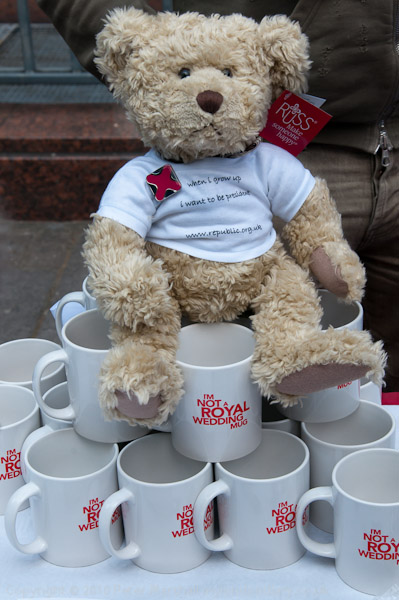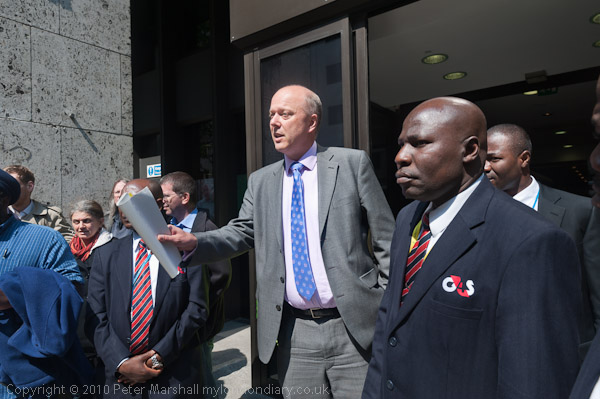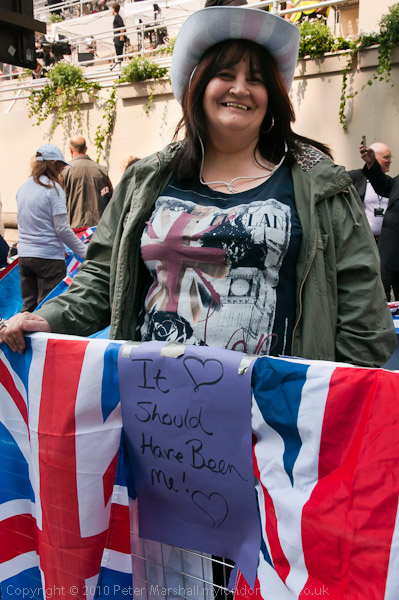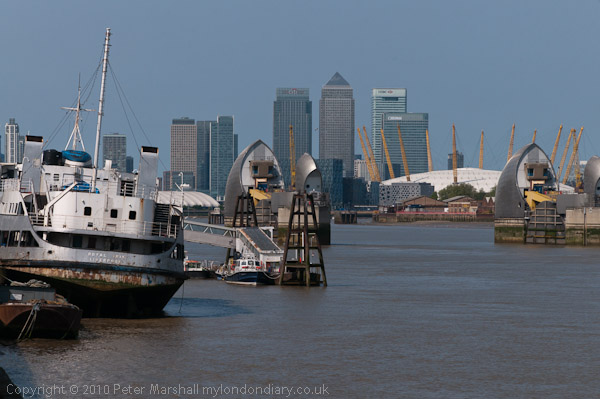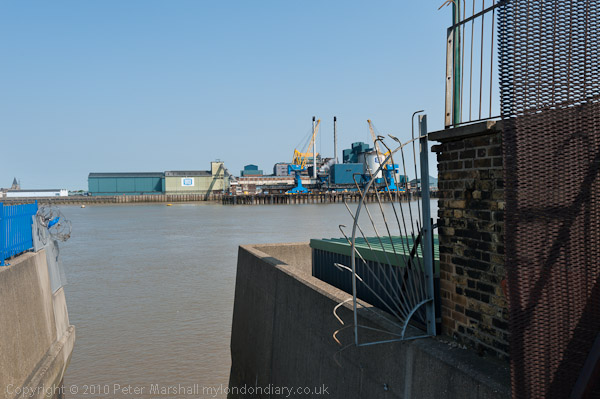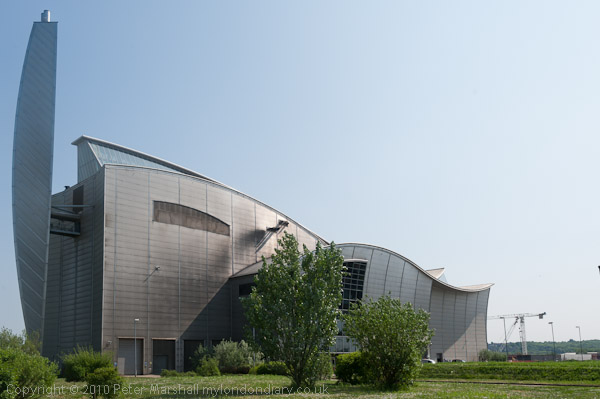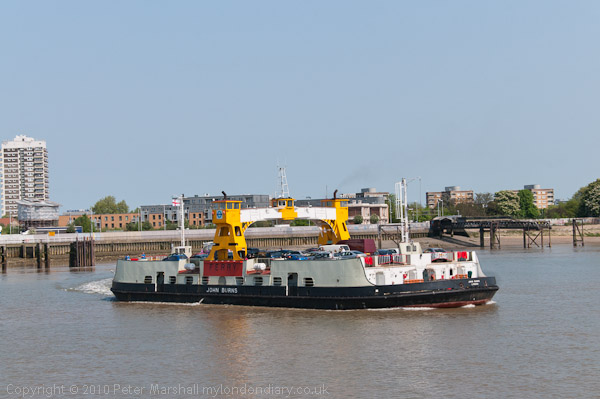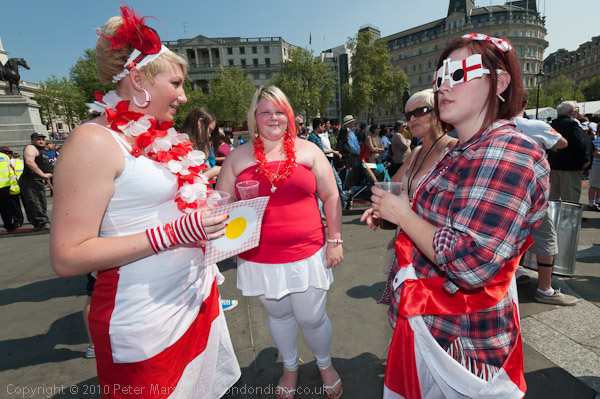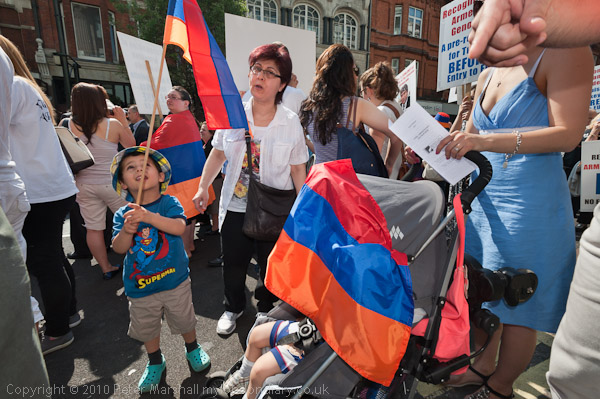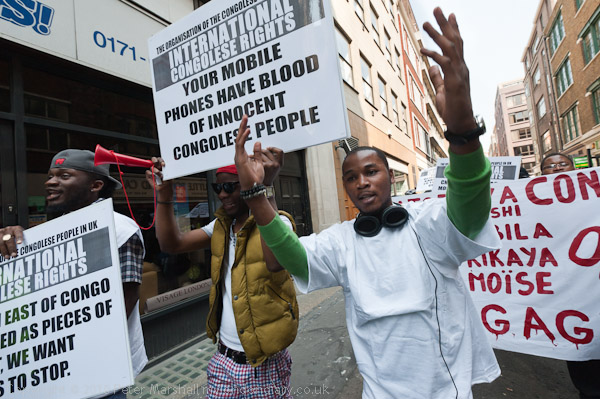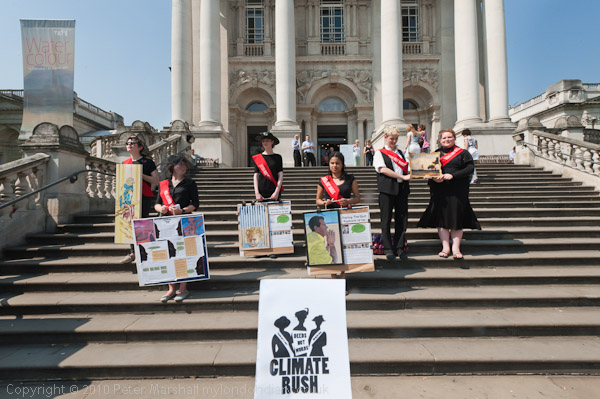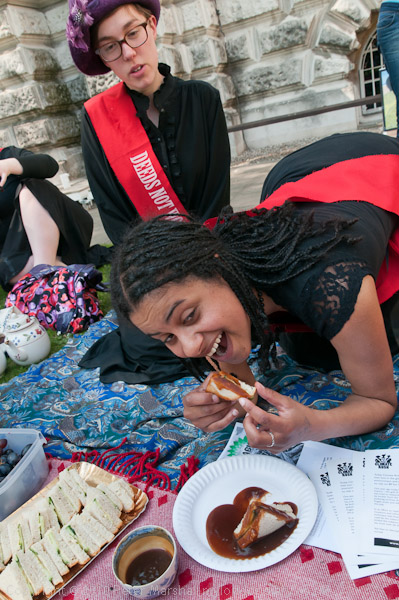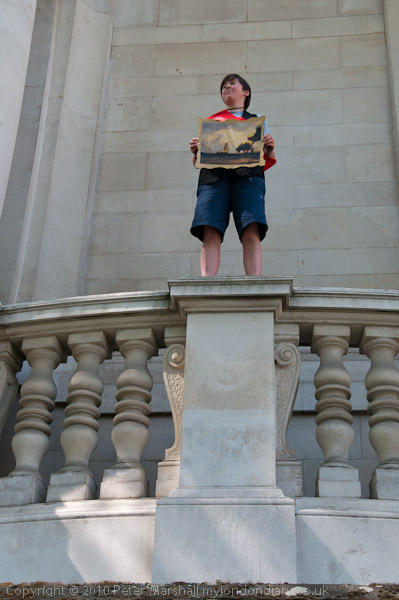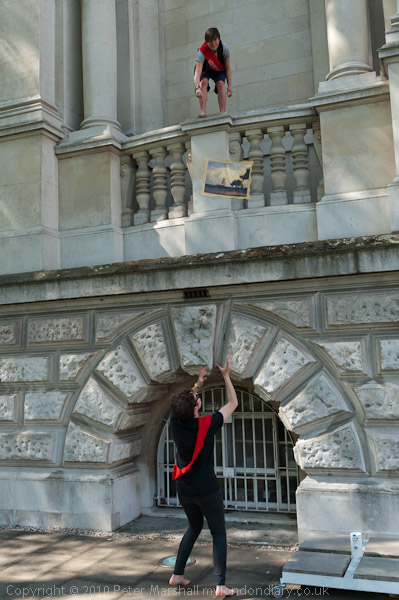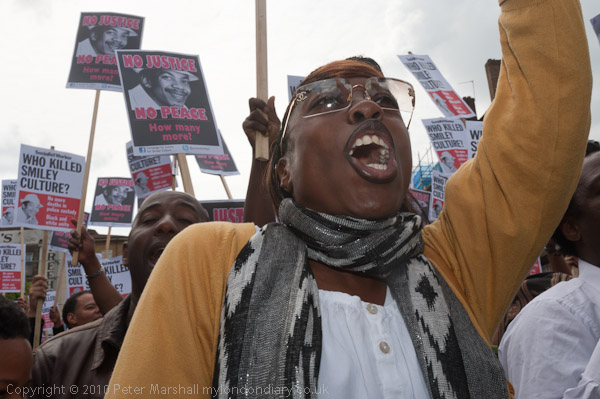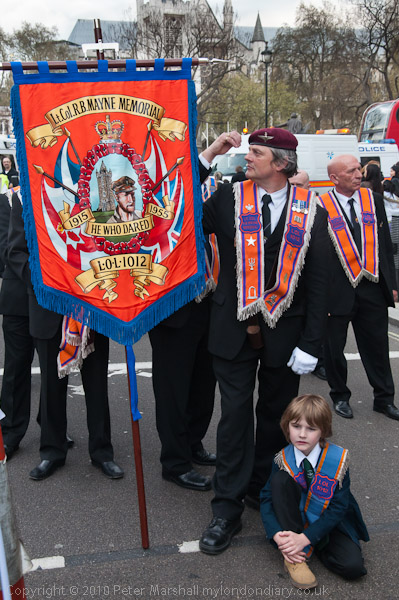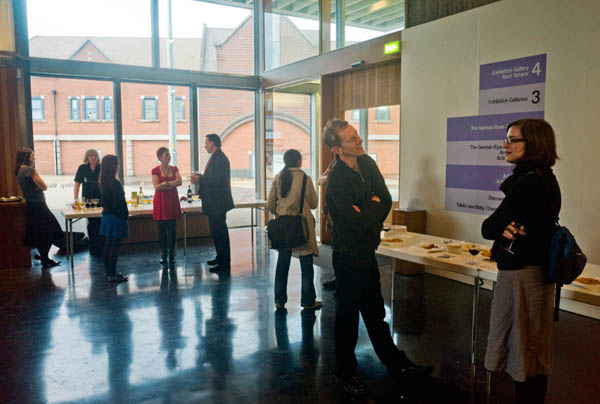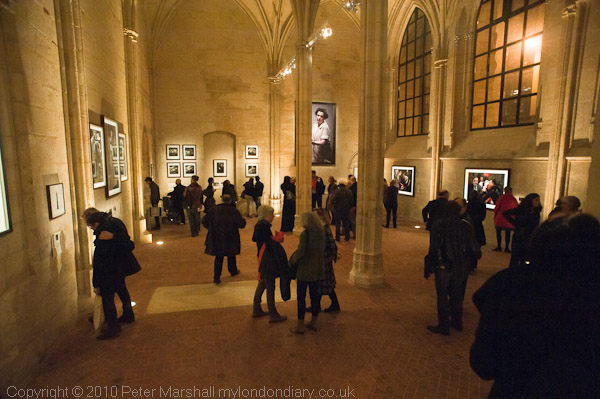Getting to Brighton is faster than getting to some parts of London, though it is further away and more expensive. I walked off the train at Brighton station at 11.27 and looked around for someone I knew, but there was nobody in sight, and I guessed few had come down from London for the ‘May Day Protest and Party‘ held a day early on April 30.
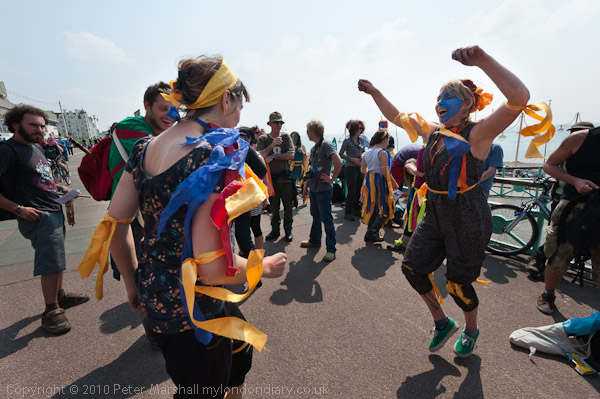
The protesters were clearly in the mood for a party
I knew at least one photographer had come earlier, as before leaving home I’d read his tweet from a café at the station. The event organisers had decided to try and keep the police guessing by not releasing the meeting point until 11.30 when they would announce it on Twitter and Facebook. Fortunately for the benefit of people like myself with antique mobile phones which don’t read that kind of thing there was also a number we could ring and hear a recorded message. A heavy lorry passed close by just as it started, but I heard enough to guess which way to go, and set off.
Making a mental note to myself that I really need to upgrade my phone to something that will keep up with social networking. More and more tweets are used to keep people informed of exactly what is happening and in particular where the action is in demonstrations, and I’m missing this out on the street unless I’m with another photographer who can read them.
I’m fairly sure that the police will have known in advance, with at least one of those in the group planning every demonstration being an undercover cop, even if perhaps Brighton hasn’t yet got the the stage of G K Chesterton’s ‘The Man Who Was Thursday’ where six of the seven members of the anarchist’s central council turn out to be police spies. But certainly by the time I arrived on the seafront there were at least two mounted police and two slightly obvious plain clothes cops there, with a row of police cars watching from the opposite side of the road. More gathered as the protesters also arrived for the start.
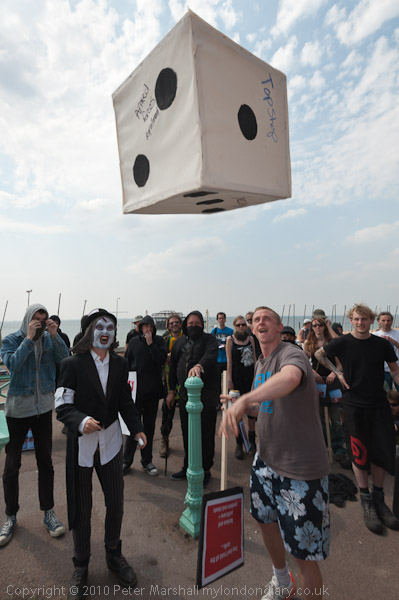
A large dice was used to decide the first protest target – though we never got there
It seemed to be a day when neither police nor protesters knew what they were trying to do. The police kettled and then unkettled on several occasions and seemed to panic whenever the protesters started moving, while the protesters – with rather more justification given what happened – thought that every time they saw more than a couple of police they were about to be kettled and rushed off in a different direction.
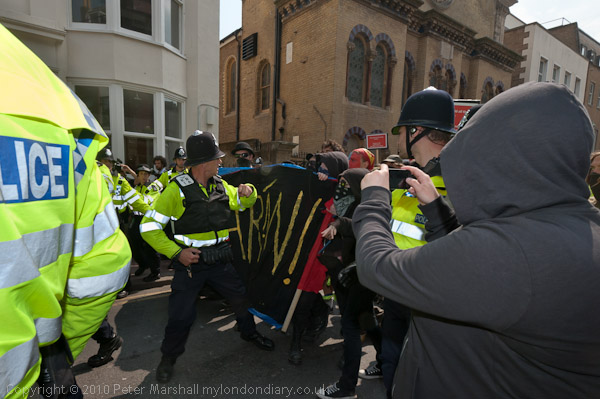
An officer adopts an aggressive stance
A few people on both sides occasionally lost their tempers a little, and police arrested eight protesters, some apparently on very trivial or non-existent grounds. Most of the public who saw the protest seemed to be asking what it was about – and if they found out there were generally expressions of support. All of us got sore feet, from walking and running in circles around the centre of Brighton, and well over half of the protesters had disappeared before the protest seemed finally to come to an end and the remaining group began to party on the shingle that passes for a beach and I finally went home.
Compared with the few previous protests I’ve photographed in Brighton – and certainly to some of the videos I’ve watched of other events – this was a relatively peaceful day, with less relatively indiscriminate violence by the police, and much less interference with the press and other photographers. Most of the times I was asked to move I think there was a genuine concern for my safety by officers who realise how dangerous and unpredictable police horses can be – and there were clearly times when they were not really under control.
More about the day and many more pictures at Brighton MayDay Protest.
